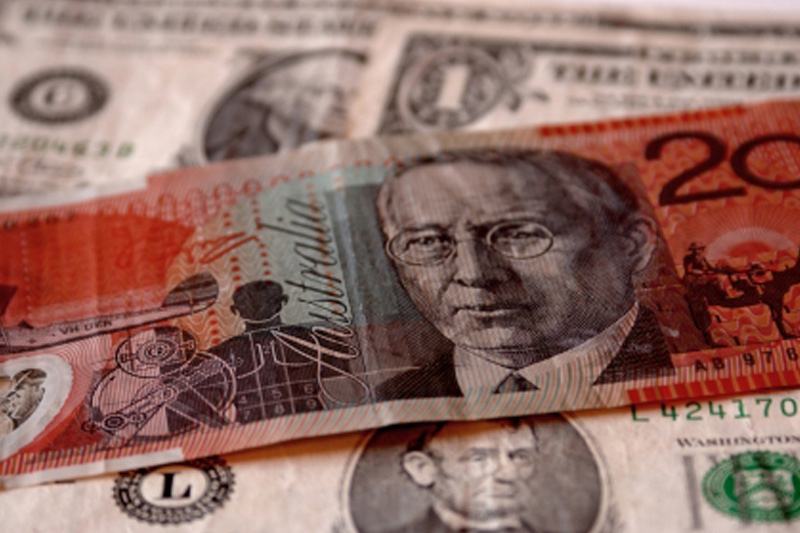Investing.com - The Australian dollar fell to a more than five-year low against its U.S. counterpart on Friday before bouncing back following the release of sluggish U.S. wage growth data.
The Department of Labor reported that the U.S. employment-cost index, a measure of workers’ wages and benefits, rose just 0.2% in the second quarter. It was the smallest quarterly increase since records began in 1982 and was well below economists’ expectations of a 0.6% increase.
The unexpectedly weak data prompted investors to push back expectations on the timing of an initial hike in short term interest rates.
AUD/USD fell to 0.7236 on Friday, the pair's lowest since April 2009, before turning higher to subsequently consolidate at 0.7308, up 0.21% for the day. For the week, the pair ticked up 0.32%, the first weekly gain in six weeks.
The Aussie still lost 5.24% against the greenback in July amid speculation the Federal Reserve will raise interest rates for the first time in nine years as early as September.
The central bank sounded more upbeat about the economy following its policy meeting last week, leaving the door open for an interest-rate hike as soon as September.
In its rate statement published Wednesday, the Fed described the economy as expanding "moderately," while upgrading its view of the labor and housing markets.
The Fed gave no clear indication of the timing of the next rate hike, but left itself room to act as early as September, citing "solid" gains in the job market and "additional" improvement in the housing sector.
The Commerce Department said on Thursday that the economy grew 2.3% in the second quarter, missing expectations for growth of 2.6%, but improving from growth of 0.6% in the preceding quarter.
The U.S. dollar index, which measures the greenback’s strength against a trade-weighted basket of six major currencies, was at 97.32 late Friday, paring the week’s gains to 0.1%.
The dollar index rose 1.86% in July, boosted by expectations that the Federal Reserve could raise rates as soon as September if the economy continues to improve as expected.
The Aussie was also pressured by plunging commodity prices and steep declines on China's stock market last week.
In the week ahead, investors will be focusing on Friday's nonfarm payrolls report for July, for fresh indications on the strength of the economy and the timing of a U.S. rate increase.
Market players will also be focusing on the outcome of a policy meeting of the Reserve Bank of Australia on Tuesday.
Ahead of the coming week, Investing.com has compiled a list of these and other significant events likely to affect the markets.
Monday, August 3
China is to release revised data on manufacturing activity.
The U.S. is to release data on personal income and expenditure, while the Institute of Supply Management is to release data on manufacturing activity.
Tuesday, August 4
The Reserve Bank of Australia is to announce its benchmark interest rate and publish its rate statement, which outlines economic conditions and the factors affecting the monetary policy decision.
Australia is also to release data on retail sales and the trade balance.
Meanwhile, the U.S. is to report on factory orders.
Wednesday, August 5
The U.S. is to release the ADP report on private sector hiring, while the ISM is to release data on service sector activity.
Thursday, August 6
Australia is to publish its latest unemployment report.
The U.S. is to release its weekly government report on initial jobless claims.
Friday, August 7
The RBA is to publish its monetary policy statement.
The U.S. is to round up the week with the closely watched government report on nonfarm payrolls.
